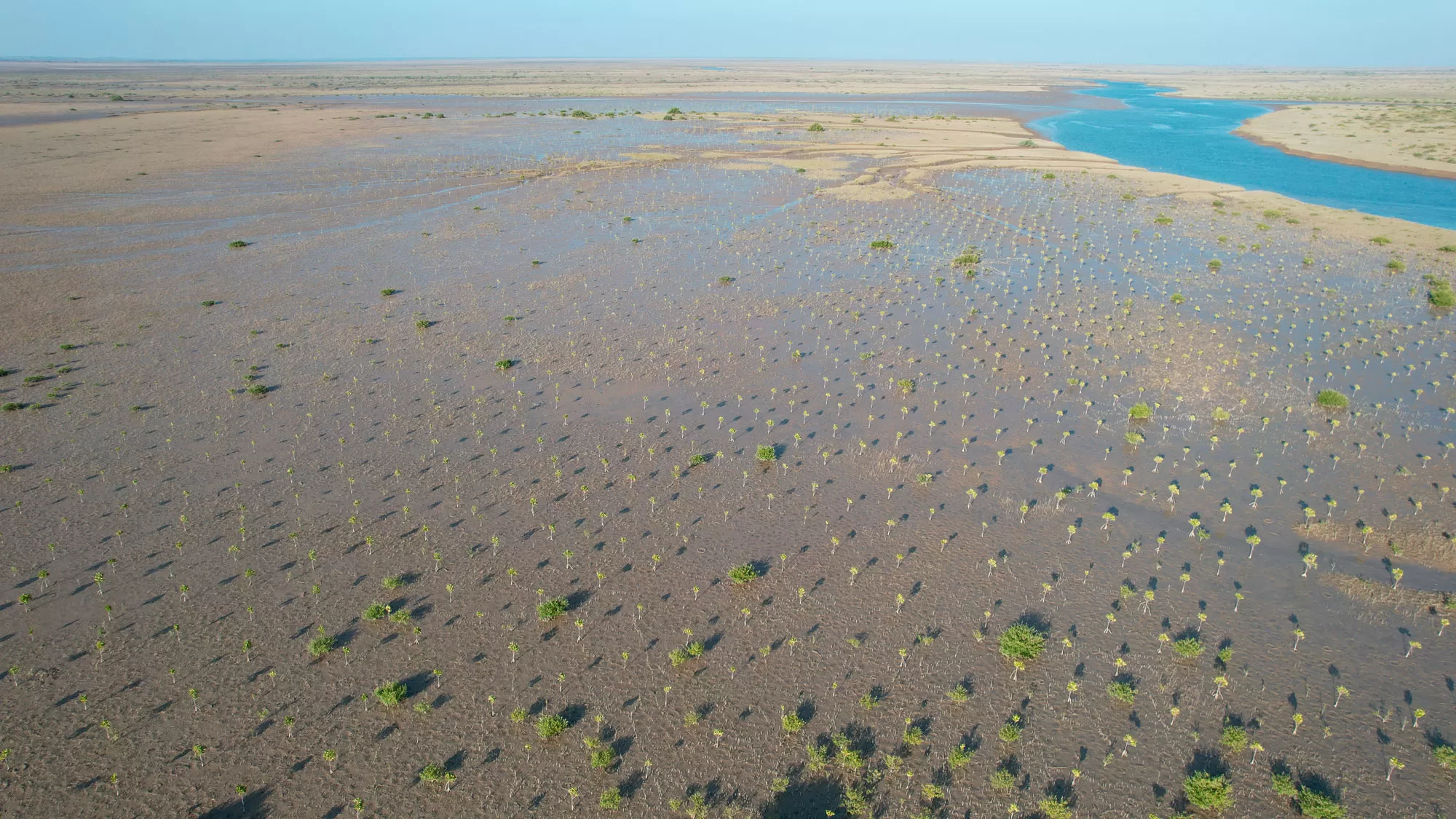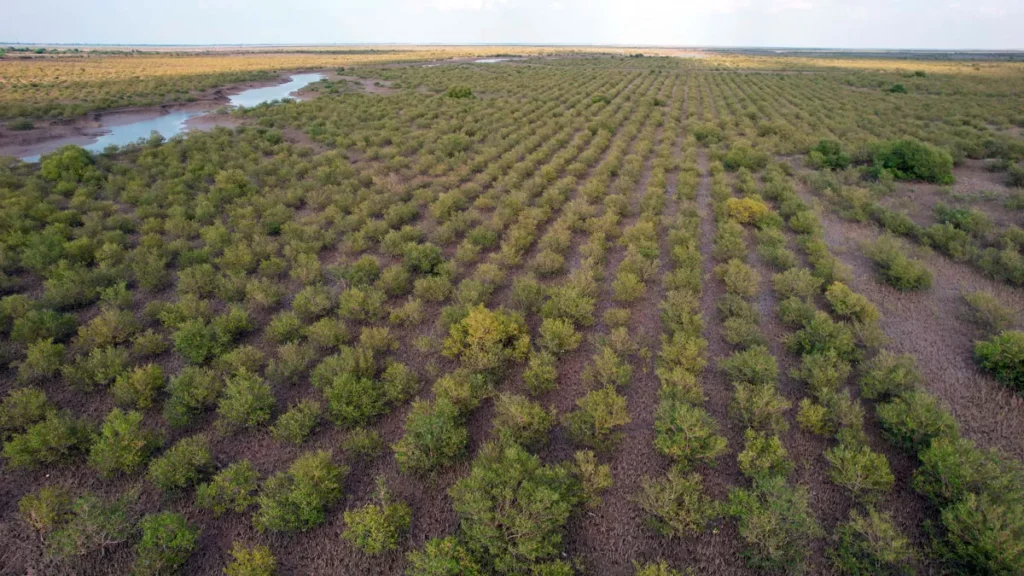Delta Blue Carbon Project

The Delta Blue Carbon (DBC) project in Pakistan is one of the world’s largest and most impactful mangrove restoration initiatives. Located in the Indus Delta region, this groundbreaking effort combines climate change mitigation, biodiversity conservation, and community development. By restoring degraded tidal wetlands and mangrove forests, the DBC project not only sequesters millions of tonnes of CO₂ but also uplifts local communities through job creation, education, and access to clean water. This article explores the transformative impact of the Delta Blue Carbon project and its role as a model for sustainable development.
What Is Delta Blue Carbon?
Delta Blue Carbon is a 60-year mangrove restoration project spanning over 350,000 hectares in Sindh Province, Pakistan. The initiative focuses on afforestation, reforestation, and revegetation of degraded tidal wetlands to combat climate change while improving livelihoods for local communities. Mangroves are among the most efficient carbon sinks on Earth, capable of storing up to four times more carbon than other tropical rainforests (source).
Key Objectives
- Sequester an estimated 142 million tonnes of CO₂ over its lifetime.
- Restore biodiversity by protecting habitats for endangered species like the Indus River dolphin and Indian pangolin (source).
- Generate economic opportunities through job creation and skill development.
- Enhance climate resilience by protecting coastal areas from erosion and flooding.
How Does Delta Blue Carbon Work?
Mangrove Restoration
The project involves planting tens of millions of mangrove seedlings across degraded tidal wetlands. To date, over 90,000 hectares have been restored, with plans to expand to 350,000 hectares, an area larger than Luxembourg (source).
Carbon Sequestration
Mangroves act as natural carbon filters, capturing CO₂ at rates up to 40 times faster than terrestrial forests (source). This makes them invaluable in global efforts to reduce greenhouse gas emissions.
Community Engagement
The project actively involves local communities through initiatives like:
- Mangrove Stewardship Agreements (MSAs), which empower residents to become custodians of restored lands (source).
- Training programs in crab farming, agriculture, forestry, and livestock management.
- Infrastructure improvements such as reverse osmosis plants providing clean drinking water to thousands (source).

Environmental Benefits of Delta Blue Carbon
1. Mitigating Climate Change
The DBC project is expected to sequester 142 million tonnes of CO₂, making it one of the most effective nature-based solutions for climate change mitigation (source).
2. Restoring Biodiversity
Mangroves provide critical habitats for globally threatened species such as:
- The Indus River dolphin (Platanista minor).
- Indian Ocean humpback dolphin (Sousa plumbea).
- Indian pangolin (Manis crassicaudata) (source).
3. Enhancing Coastal Resilience
Mangroves act as natural barriers against coastal erosion and flooding, protecting vulnerable communities from climate-related disasters.
Mangroves act as natural barriers against coastal erosion and flooding, protecting vulnerable communities from climate-related disasters.
Socio-Economic Impact of Delta Blue Carbon
Job Creation
The project has already created thousands of jobs in activities like nursery maintenance, planting, and forest protection. Over its lifetime, it is expected to generate 21,000 full-time jobs, significantly improving livelihoods in Sindh Province (source).
Empowering Women
A strong focus on gender equality ensures that women have access to employment opportunities and training programs.
Access to Clean Water and Education
Infrastructure improvements include reverse osmosis plants that provide clean drinking water to thousands of people. Educational facilities have also been upgraded to foster environmental awareness among future generations (source).
Why Delta Blue Carbon Is a Model for Sustainable Development
The DBC project exemplifies how nature-based solutions can simultaneously address environmental challenges and social inequalities. By integrating climate change mitigation with community welfare, it demonstrates that sustainability is not just about preserving ecosystems—it’s about empowering people.
Key Takeaways
- Mangroves are among the most effective tools for carbon sequestration.
- Community participation ensures long-term success by embedding conservation efforts into local structures.
- Verified carbon credits from projects like DBC provide transparency and accountability in climate finance (source).
Conclusion: A Blueprint for Global Climate Action
The Delta Blue Carbon project serves as a powerful example of how large-scale restoration initiatives can drive meaningful change. By combining cutting-edge science with community engagement, DBC is not only mitigating climate change but also transforming lives in Sindh Province.
Coffset proudly supports verified projects like Delta Blue Carbon through partnerships with platforms like CNaught to ensure transparency and measurable impact. Take action today—calculate your carbon impact using Coffset’s carbon footprint calculator and contribute to projects that make a real difference!
References:
https://www.atpi.com/halo-project/delta-blue-carbon-project/
https://verra.org/programs/ccbs/delta-blue-carbon-1-indus-delta-mangrove-restoration-project-phase-1/
https://www.respira-international.com/delta-blue-carbon-the-worlds-largest-mangrove-project/
https://onetribe.com/delta-blue-carbon/
https://www.theigc.org/blogs/climate-priorities-developing-countries/market-based-solutions-sustainable-development
https://zerocarbon.one/project/delta-blue-carbon-%E2%80%93-1